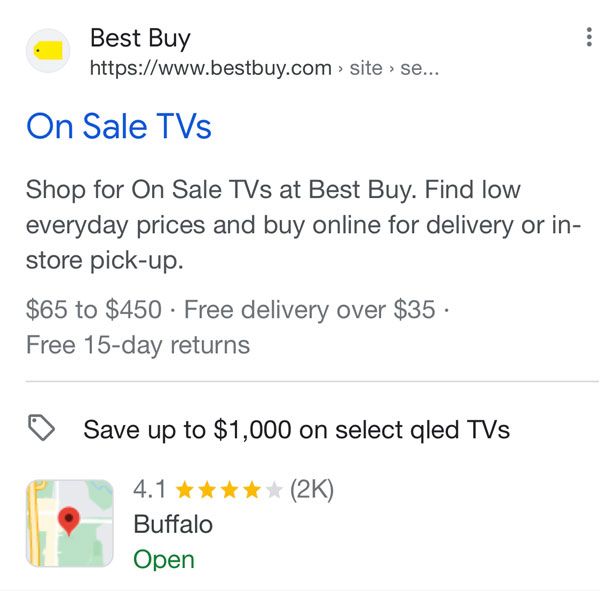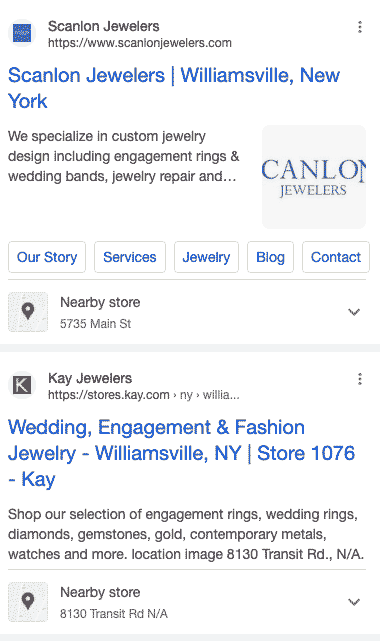LSA Reviews MIA, Inventory Eye Candy, Apple Nukes UTMs

Google Finally Focused on Fake LSA Reviews?
Google has missed a huge opportunity with Local Service Ads (LSAs) to clean up both local listings and reviews. Within a vetted and verified environment it should have been possible to prevent both spammy listings and spammy reviews. They have done neither. This past Friday, though, LSA reviews seem to have gone MIA. Some of us are hoping that Google is finally (finally) putting systems in place to prevent fake reviews. As with everything that Google touches, we never know whether it's a feature or a bug.

Our take:
- In the context of LSA, Google can see and should be able to verify consumer interactions with a business.
- But Google, in their "release early, never fix shit" methodology, allows what should be a unique review URL to be used multiple times. This makes spamming easy.
- Google implemented fake review recognition systems in GBP. Even if put in place by external pressure and still is failing, it's better than nothing. LSAs have a totally different review management system and can't use the GBP infrastructure. (I shouldn't be surprised, but still am.)
Google Pushing for Local Inventory
Google is leaving no stone unturned in its efforts to get local inventory into the SERP. And the playbook Google is using is a familiar one: make it free and provide visual incentive and ranking gains to businesses that take advantage of listing their inventory in Merchant Center. The eye candy currently on offer, if you are using Merchant Center, are Plus Boxes and Local Promotions, inserted below your organic result. First spotted in their recent incarnation in 2022, both the Plus Boxes and the Local Promotion flag have become significantly more common on product-driven queries with local intent (mobile first/only). There are several formats being tested.


Our take:
- Google is leveraging strength in local and ads to compete against Amazon by showing and promoting local inventory.
- Initially this was run through GBP but products are being deprecated via the GBP dashboard and API. Google says products are staying in GBP but the push is on for Merchant Center adoption.
- Google has been building out Merchant Center to accept more data via Pointy, feeds, e-commerce app integration and now scraping. Businesses that want to compete on product driven local queries need to implement e-commerce on their websites.
Apple to Nuke UTM Tracking
Apple had a lot going on at WWDC last week. From a marketer perspective a buried lede, which should have gotten more coverage, was: campaign tracking UTMs will be stripped from all URLs in Safari (private mode browsing), Messaging or Mail. This applies to both the upcoming iOS17 and MacOS Sonoma. Apple has made a strong commitment to privacy "as a right" and was an early critic of "eyes everywhere" tracking techniques of Google and Facebook. This positioning might be viewed as a way to knee cap their competitors and to leverage privacy for marketing. But the effort has been steady and relentless, with increasing privacy efforts every year or so. Historically, this has made life hard for email marketers and it has definitely impacted the likes of Facebook and Snap. It appears that the hand of the grim marketing reaper will finally reach Local SEOs.

Our take:
- UTM tagging has been the best way to measure the value of local directories and particularly the impact of various GBP features.
- The loss of campaign data will make it harder for Local SEOs to track and calculate ROI due to significant undercounting.
- Apple has finally made Maps metrics available via Business Connect. Apple Maps has become a (distant) second place player in Local discovery. This will make it harder to understand the impact of Apple vs. Google, coming from the Apple ecosystem.
Recent Analysis
- Near Memo: When to ask for reviews, Is SGE a headfake? Is Apple Vision the next platform?
- Missing Google Reviews: A Step-by-Step Recovery Guide, by Mike Blumenthal
- Apple Vision Pro: Technical Marvel with WTF Pricing, by Greg Sterling
Short Takes
- Last week we mentioned the increasing role of video in Local Pack results. With Google SGE, video takes an ever more prominent role in Local with video being the main imagery shown in the profile.
- The other good news is that videos are no longer limited to 30 seconds. Video is becoming critical, with creative ways to make getting SMB video easier.
- Bug alert: there were increasing reports of issues with both phone and postcard verification in the GBP forums. When one method failed, businesses were having difficulty using another method. Whether this is a new process or bugs is not clear. This is in addition to ongoing issues with video verification.
- Logos for major brands are not showing on Google Business Profiles but are showing for single location entities.
- Buried in Apple's WWDC announcements were new features coming to Maps: EV charging station availability, offline mapping and more detailed topographic information for hiking. Apple Maps has reached parity and in some ways exceeds Google Maps.
- For those of you that love historical data, and occasionally kicking a dead horse, the annual Yellow Pages book page count for my area has been published.
- Services have become the new categories at Google and offer strong ranking benefits. This Google URL hack from Stan Kolev at Pleper allows you to see which of your services have been translated by Google. This reportedly indicates the relative importance of the services to search.
Listen to our latest podcast.

How can we make this better? Email us with suggestions and recommendations.
